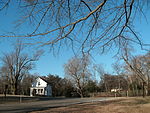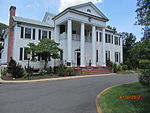Fort Washington Park

Fort Washington, located near the community of Fort Washington, Maryland, was for many decades the only defensive fort protecting Washington, D.C. The original fort, overlooking the Potomac River, was completed in 1809, and was begun as Fort Warburton, but renamed in 1808. During the War of 1812, the fort was destroyed by its own garrison during a British advance. The current historic fort—maintained by the National Park Service—was initially constructed in 1824. It is a stone structure with a good cannon shot down the Potomac River. The fort was extensively remodeled in the 1840s and 1890s. The Fort was turned over to the U.S. Department of the Interior in 1946 after its last military personnel departed.The expansive grounds of the present Fort Washington Park, with its extensive hiking/bicycle paths and river view, are a scenic venue for picnicking, fishing, and outdoor recreation. Historical re-enactments are held periodically at the Fort, and there is a small museum. In 2006, repairs were done to shore up the crumbling outer wall, in preparation for the 200th anniversary. The Fort Washington Light, located below the fort, was established in 1857. The current tower, standing 28 feet tall, was constructed in 1882.
Excerpt from the Wikipedia article Fort Washington Park (License: CC BY-SA 3.0, Authors, Images).Fort Washington Park
Ft Washington River Trail,
Geographical coordinates (GPS) Address External links Nearby Places Show on map
Geographical coordinates (GPS)
| Latitude | Longitude |
|---|---|
| N 38.710833333333 ° | E -77.033055555556 ° |
Address
Fort Washington
Ft Washington River Trail
22308
Maryland, United States
Open on Google Maps









